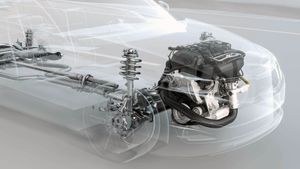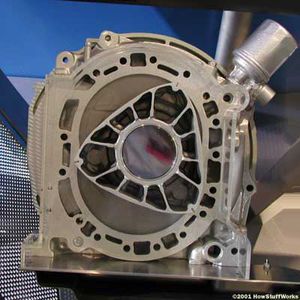
The standard four-stroke engines described in How Car Engines Work are called Otto-cycle engines. They are named after Nikolaus Otto, who invented this type of engine in 1867. In the same way, Diesel-cycle engines are named after inventor Rudolf Diesel.
Ralph Miller patented his Miller-cycle engine in the 1940s, and for the last several years Mazda has been using this type of engine in some of its cars.
Advertisement
A Miller-cycle engine is very similar to an Otto-cycle engine. The Miller-cycle uses pistons, valves, a spark plug, etc., just like an Otto-cycle engine does. There are two big differences:
- A Miller-cycle engine depends on a supercharger.
- A Miller-cycle engine leaves the intake valve open during part of the compression stroke, so that the engine is compressing against the pressure of the supercharger rather than the pressure of the cylinder walls. The effect is increased efficiency, at a level of about 15 percent.
Advertisement











